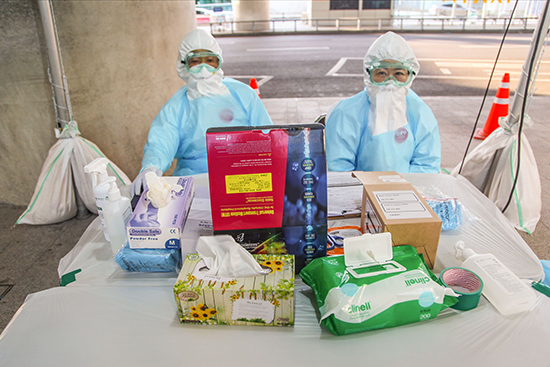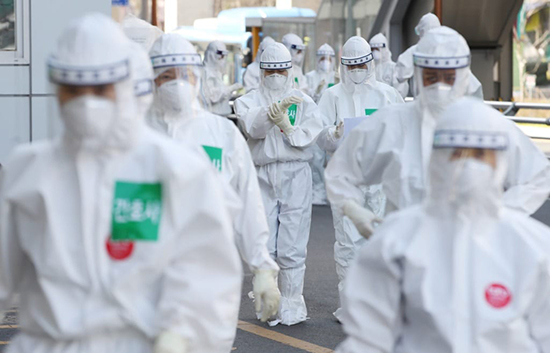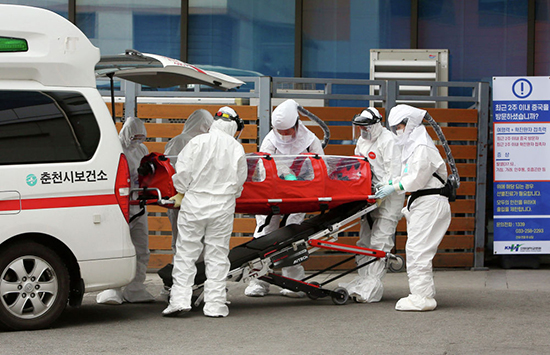South Korea's method for defeating coronavirus: from 909 cases per day to 74

The number of infected, dead and recovered
The Asian country was the second most infected in the world, but has implemented a response that combines transparency, new technologies and responsible institutions and citizens.
South Korea
Korean Society of Epidemiology President Kim Dong-hyun, like many other experts, stressed that it is too early to judge whether South Korea's response is the right one to curb the coronavirus.
His action plan can serve as a lesson for countries that are already involved in the fight against coronavirus or are preparing for it. all indications are that, thanks to prevention and mitigation programs, the country is in a position to cushion the effects of a sharp recovery, should it occur.
The Asian country, which registered 909 cases on Feb. 29, today reported just 74 new infections.
Protective measures against coronavirus
South Korean authorities banned large gatherings, closed educational institutions and public places (parks, sports centers or day centers), and canceled all sports competitions shortly after the discovery of an outbreak in the country around the city of Daegu (in the southeast). Seoul, South Korea's largest city with a population of 9.7 million, announced the closure of public places and a ban on demonstrations around February 21, when 150 cases of infection were reported across the country, the total now exceeding 8,000.

The Korea Centers for Infectious Disease Control and Prevention (KCDC) is a reference point due to the large amount of detailed information it publishes daily with impeccable timeliness.
The wealth of valuable information it provides helps experts and citizens alike to better understand how this virus works.
The National Mobile Alert System alerts people in areas or communities that a new case has been found in their area and provides links to details of the last places the infected person passed through.
This is not to prevent people from visiting these places (which are thoroughly disinfected), but to make those who have been there aware of the symptoms.
Institutions in South Korea have implemented early hygiene practices, the use of masks, telecommuting, the need to stay at home if you have symptoms, or the need to enforce social distancing: these are ubiquitous messages on the streets, on public transport or in the media.
South Korea, together with Bahrain, is the country that conducts the highest number of tests (5370 per million inhabitants), although it should be noted that 70% of these tests were carried out on members of the Shincheonji Christian sect, which is the source of the outbreak in Daegu and is an easily traceable group.
In addition to testing capacity, working on who should or should not be tested has proven important in South Korea to avoid wasting existing test kits.

Ambulance workers and volunteers assemble kits to fight the coronavirus crisis.
While testing when an outbreak is detected helps buy time (to prepare sites that can serve as hospital support points for cases with less severe symptoms), most countries will not have the resources that an Asian nation has.
In many places, testing will only be possible on people with severe symptoms, so a system will need to be put in place (with aggressive public awareness campaigns such as in South Korea) to ensure that people with mild symptoms or who are not at risk, observe strict quarantine.
The South Korean government has developed two phone apps to track the symptoms of people who could be potentially infected and could further spread COVID-19.
One of them is mandatory for those who arrive in South Korea from risk areas (China, Hong Kong, Macau, Iran and almost all of Europe), and require daily questionnaires to be answered about the presence or absence of symptoms; if symptoms are present, the user is directed to the call center system.
Another "app" simply alerts government officials when someone who has been quarantined for possible infection leaves the isolation area, although personal responsibility in this case is again critical, since downloading this application is not mandatory.

In the north
Measures to prevent the spread of coronavirus in the country will continue "for a long time." So far, North Korea has not reported any cases of coronavirus infection. North Korean health officials have lifted quarantines for people without coronavirus symptoms, but about 2,280 North Koreans and 2 foreigners remain in isolation. This is how it is reported by the regime media, which for the first time provides national data on the state of emergency.
Concerns remain that North Korea may be vulnerable because it has a wide and vulnerable border with China; in addition, experts emphasize that Pyongyang lacks medical equipment and infrastructure to diagnose and care for infected patients. In recent weeks, South Korean media have reported that the virus has already killed nearly 200 soldiers in the north of the country.
According to the Financial Times, officials consulted with other governments to obtain test kits for Covid-19 detection as well as prevention. The newspaper cites sources close to the North Korean regime and the alleged document.
Among the assistance requested are mainly masks and disease detection kits.
On South
It should be recalled that South Korea only prevented the access of these citizens from the Chinese province of Hubei, the origin of the virus, and did not quarantine any city or region, including Daegu and the adjacent province of North Gyeongsang, which has a population of 5 million people. Citizens were not forbidden to take to the streets or leave the city, as in China, Spain or Italy.
The city council on February 20, when the outbreak was first discovered, asked people to leave their homes only if necessary, and the vast majority of citizens have been doing so for a month.
Should I go there now: is entry allowed
It is not recommended to travel outside your own country, and even more so to a country with a large number of infected people.
South Korea
Entry is denied to persons who have visited Hubei Province in the past 14 days. Citizens of many countries (Russia is not among them, but it may soon get there) will need to undergo quarantine procedures.
North Korea
Entry into North Korea is difficult because of the country's politics, not because of the coronavirus. Efforts are being made to ensure that the virus does not enter the country. To this end, the regime has stepped up border controls and strengthened the quarantine process.